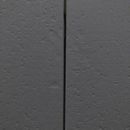Gaps in EPS Rigid Insulation
New Construction in New England (Climate Zone 5). I just finished installing my EPS rigid insulation over the TUFF-N-DRI waterproofing I had sprayed on. Installation was quite easy, but after a couple of days I noticed some sections had separated a bit from one another. My question is, should I worry about gaps like in the images attached (for an exterior below grade installation) and if so, how would you suggest going about closing them? The EPS manufacturer says tape or a expanding sealant would do, but I wanted to check with the GBA community because you all have helped me out tremendously on my new adventure. (…and I trust you all more)
Bonus: I’m currently at the fork in the road with whether or not I need a Drainage Mat. Building supplier has the Miradrain product readily available in stock and I was considering using that as my last layer of defense.
Some context: We had to blast our lot prior to excavation and there are no indications of any water puddling up thus far in the foundation hole. The basement is a walkout, so some would probably consider my waterproofing (TUFF-N-DRI) approach as unneeded since the site seems to be well draining. I even went as far as to check the 2016 soil survey that was available from my town where its been documented that we are on ChC (Canton & Charlton – very stony fine sandy loams) type of soil.
Based on some of this, do you all have any advice on whether or not to go with the Drainage Mat?
Thanks
GBA Detail Library
A collection of one thousand construction details organized by climate and house part











Replies
I'll give your post a bump.
My recollection from reading other posts is EPS does expand and contract a bit in response to temperature changes. Not sure how big an issue that might be when most of the foam is below grade.
Martin's basement article (https://www.greenbuildingadvisor.com/article/how-to-insulate-a-basement-wall) states that seams must be caulked or tape when the foam is applied to interior walls, but he does not provide this guidance in the section on exterior installations.
This material does expand and contract with temperature changes, so those gaps are probably due to you having installed the material on a warm day and now it's cooler and the gaps opened as the material shrank a bit.
Ideally you still want to limit air currents in those gaps for maximum insulating value. You can use tape, but I'd use canned foam to fill those gaps. The softer "door and window" type of foam will allow for some flexibility for future expansion and contraction of the EPS.
Bill